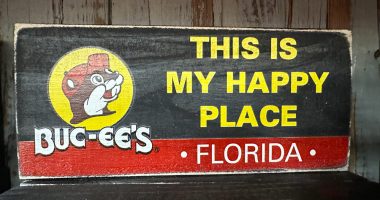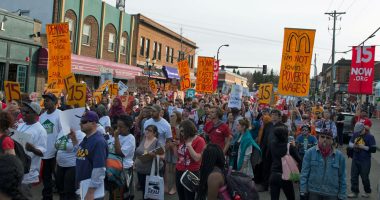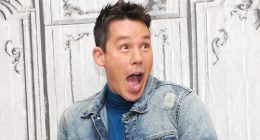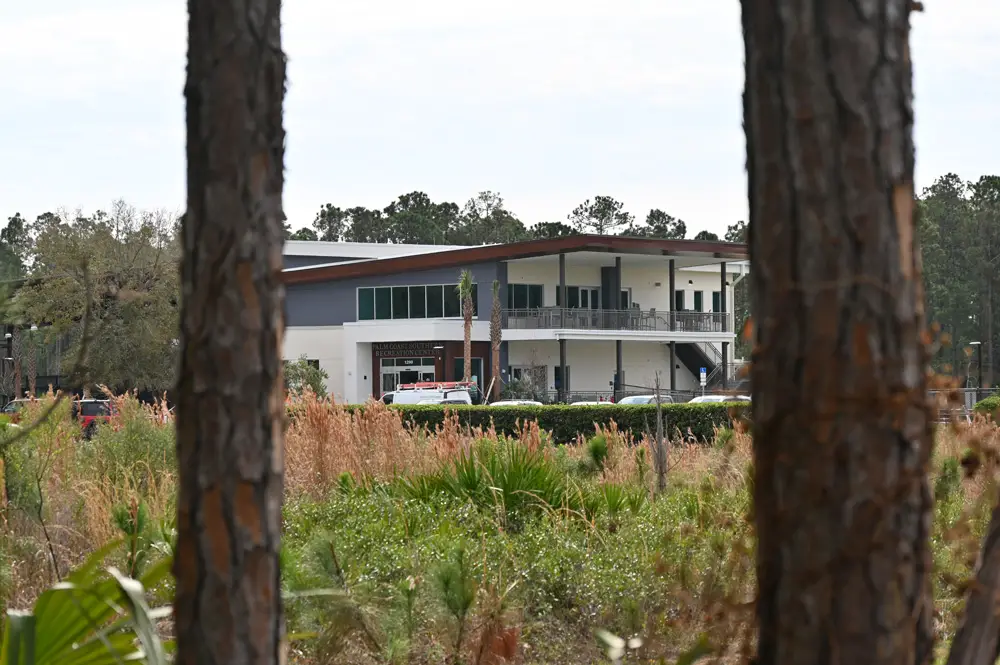
Perhaps the most important thing you should know about Palm Coast’s new Southern Recreation Center is that you don’t have to be a tennis player or a pickleball player to go there. That’s why the emphasis on that happily open-ended word: Recreation. You can fill in your own kind of fun.
One of the center’s most inviting features is its two levels of lounging areas where anyone can pull up a chair, set up a laptop or a drink, if not preferably both, and hang out for a few hours, alone or in a group, maybe enjoying the play below–tennis to the west, pickleball to the east–or just the greenery beyond the courts.
Maybe you have a dog or two or three: you can bring them to the new 1.3-acre dog parks and their luxurious close-cropped lawns–one park for big dogs, one for small–not to mention the biggest pylons any canine has ever seen, and that should make lifting a leg and irrigating the gods a sublime experience: the dog park happens to be in the right of way of FPL’s high-voltage power lines, whose crackle and pop can only spark up the experience.
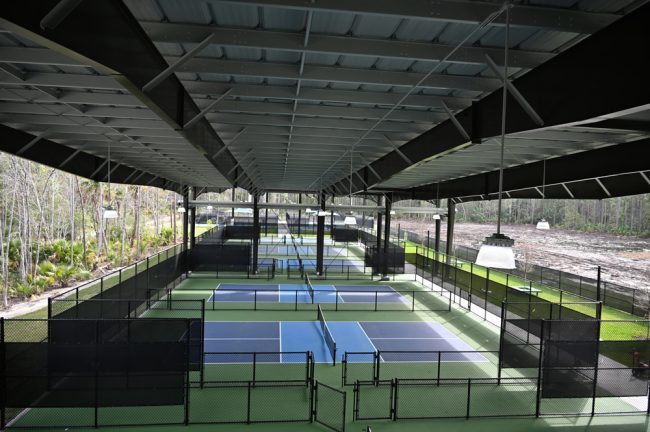
Maybe you’re into vegetable gardening but you’re not too keen on troubling with it in your own backyard, but you still want that earthy communion. You can do just that at the community garden’s 18 plots, six of them elevated, making them accessible to the disabled (and ADA compliant), all of them equipped with drip technology that minimizes the use of water, since it drips only what’s needed. Composting bins included. The all-organic garden was conceived by city staff and resident input and is co-managed by the city’s parks and recreation department and the master gardening program of the University of Florida’s extension office. (You can rent your own plot: call 386-986-2323 to add your name to the list.)
Maybe you’re among the thousands of people who’ve long enjoyed walking, running, biking the Lehigh Trail, whose trailhead at the Belle Terre Parkway end until now had been a decapitated twilight zone that required you to park on grass or mud across the boulevard and cross that river of heedless drivers. No more. The trailhead has been rebuilt, with a paved, un-cramped parking lot and 78 spaces, plus bathrooms, plus a bike repair station, plus a few lounging benches here and there.
And we haven’t yet said the first thing about tennis or pickle ball.
We’re making our way there (and you can make your way through it all when the city hosts a grand opening for residents on Feb. 23, from 4:30 to 7 p.m.) This is the $2.52 million trailhead the City Council approved in July 2022, with a $1.24 million grant from the state Transportation Department shouldering some of that and park impact fees picking up most of the rest. This is the $11.35 million Rec Center the council approved the same day, none of it paid out of the city’s general fund, which is supported by property taxes. Rather, park impact fees picked up $7.1 million, the State Road 100 Community Redevelopment Agency’s tax revenue picked up $3.5 million of it (so some property taxes were part of it), and a $739,000 Tourist Development Council grant covering the rest.
It’s been going from drawings to construction site to finished product since: this morning, as City Architect Eric Gebo, Sustainability and Resiliency Chief Officer Maeven Rogers and Communications and Marketing Supervisor Shannon Martin gave a reporter a tour of the entire grounds, workers were punch-listing their way through the building and the new courts, though for the most parks the place was approaching the immaculate. The two-story, 9,000-square-foot Rec Center building’s manages to be both imposing and recessive, sitting as it does beyond the tennis courts in a domain made its own.
“This is a new vernacular architecture for the city,” Gebo said. “It’s one of the most modern pieces of architecture that the city has ever, attempted. It’s really starting to inform some of the new direction that the city is going with their architecture. The fire stations are going to be very modern in design, the new public works facility along those same lines is going to be a very different, contemporary design, very progressive.”
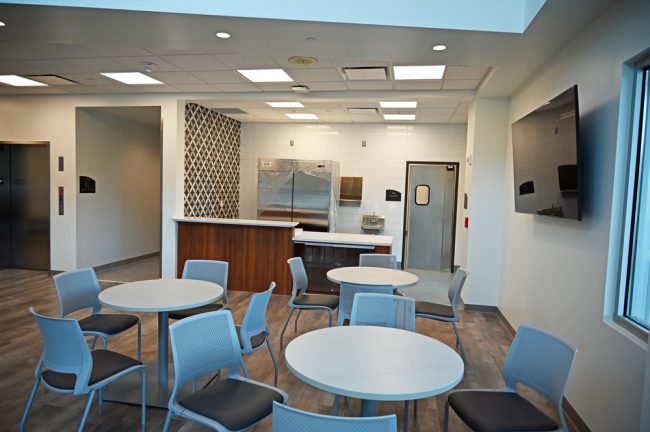
You can see the difference between the Palm Coast Community Center’s more rounded, a touch pontifical look of archways and cupolas, and the strictly angular look of the Rec Center that nevertheless manages not to look a bit boxy (like City Hall). It evokes the modern but also harkens back to the architecture of the 1950s and 60s that favored streamlined, functional looks. “We have abandoned the barrel tile roof, the arched openings, the stucco finishes. It’s a new direction, really. It’s a new, more modern, contemporary architecture,” Gebo said. Frank Lloyd Wright would have approved.
Light-colored concrete, paving and rooftop material that reflects sunlight minimizes the “heat island effect” created by structures and roads that absorb heat. Covering the six pickle all courts will allow residents to play even in the dead of summer, when playing in uncovered environments is more straining. (There are no plans for covered tennis courts.) All the plants on the grounds are drought-tolerant.
The moment you step through the large glass entrance doors and onto the luxury vinyl tile the high ceilings and ambiant light from enormous windows as if lifts you skyward. It’s not huge. It’s roomy and inviting. Once it is done abandoning the City Marketplace location it occupied for five years, Redefined Food will be serving patrons from the first-floor kitchen, with round white tables arrayed indoors and outside on a large patio. “Redefined foods will be having a vegetable bed at our new community garden and they’ll be harvesting food, small amounts of food that they’ll be serving as well,” Rogers said.
They’ll serve indoors and outside on a large patio that’ll get even larger soon. There’s a planned expansion of the grounds which will extend its footprint. There are now 10 tennis courts. The expansion includes a stadium court and four additional clay courts. The stadium court will be adjacent to the Rec Center, giving patrons there unobstructed views. That’s also in design, but the work should begin within the year, Gebo said.
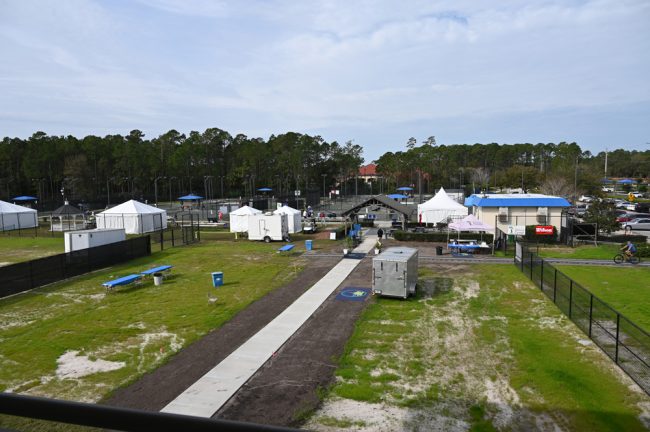
The bathrooms are equipped with banks of lockers (bring your own lock), shower and other necessities. You then make your way to those covered pickle ball courts, enticing even to someone who’s never held a pickle ball racket. It was quiet today as it won’t be when the courts are teeming with players and the courts’ perfect blues and grays start to get scuffed, scraped and spat on. But if pickle ball has ever had a cathedral, this is it, with its roof standing in for stained glass: The roof is partly covered with 201 solar panels, each producing enough electricity to provide 76 percent of the site’s power needs, according to a set of “sustainability data” released by the city.
Put another way, the estimated 138,000 kWh of free energy the panels will generate each year should yield savings of $537,508 in power costs over the next 25 years, assuming an average utility rate increase of 3.5 percent. That’s money saved for the general fund, which has to pick up all costs of the center from here on. A large-screen TV will include displays from an app that shows in real time the energy produced by the solar panels.
“Our utility bill, we’re expecting actually to be zero,” Rogers said. “By the end of the year hopefully we can take advantage of FPL’s net metering program, and we actually get paid some of that energy usage back.”
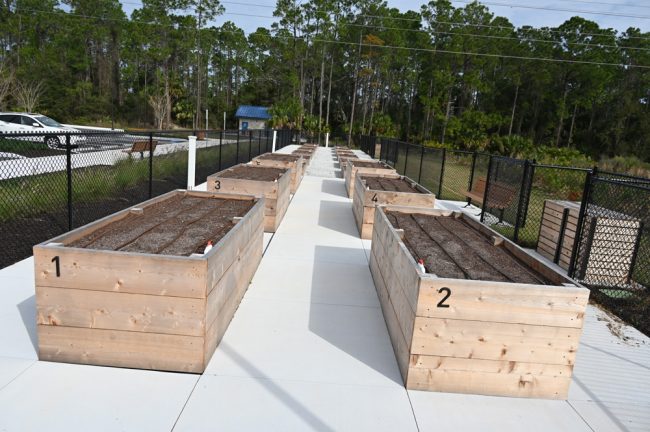
The building includes what it refers to as a fitness room, one of its walls paneled with mirrors, though it’ll have broader uses, and a multipurpose rooms (UF’s extension office will be using the space, among others), plus offices.
There’s a different kind of cynergy in play in the Rec Center’s design, combining green technology, conservation, sustainability, heat protection, and even workforce development, if you include the local merchants who’ll run the food concession and the pro shop. You see elements of each wherever you turn, down to the furniture made of recycled materials with fewer volatile organic compounds, or the plan to recycle pickleballs and tennis balls, the all-LED lighting. “So we’re really showing in our new buildings moving forward a fiscal responsibility to energy consumption and water consumption, lowering our utility bills, which allows the city to use that money for other things,” Rogers said.
To get back to pickleball: the city has lined up a tournament at the facility around St. Patrick’s Day, and does not expect it till be difficult to fill the calendar with tournaments or local play, Many Palm Coast residents–including Martin and her husband–have been in the habit of traveling to Pictona, the pickleball club in Holly Hill, which has 49 courts, 12 of them covered (plus a community garden). But it’s expensive: $400 for a one-person membership for the year, $15 for a day pass.
In comparison, it’ll cost $250 for a one-person membership at the Rec Center, $100 for children (as opposed to $200 at Pictona), $7 for a daily pass, with the option of buying 10 open-ended visits for $60. But keep this in mind: The city is inviting all residents to take advantage of its Welcome to Pickleball program, allowing residents to play up to 12 games for free as an introduction to the facility, before committing to an annual or daily pass. There are six uncovered pickleball courts in addition to the six covered ones.
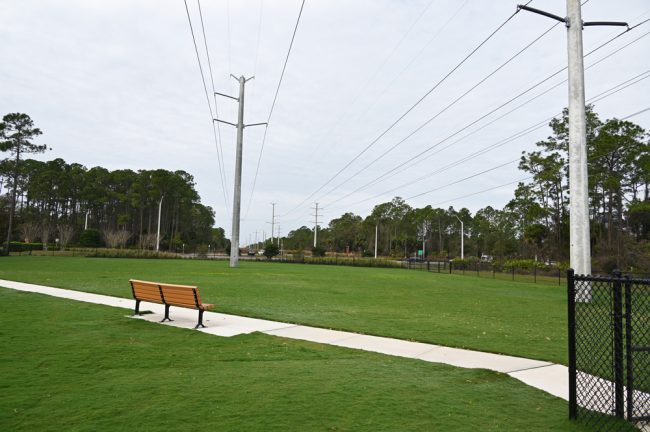
See the full rate sheet here, including the Tennis Center.
“We don’t want our residents to have to drive to Daytona to play pickleball,” Rogers said. “We want our residents to work, eat, play here. So this is an epicenter of trying to accomplish that goal for the city.” There will be additional pickleball courts built in the future: part of those continuing expansions that are redefining the concept of recreation in the city, as the Southern Recreation Center appears to be doing already.
“This is the definition of community and what local governments can do for their community,” Rogers said. “Not only are we providing a safe space for residents and families to come enjoy: they can go to the community garden, they can go to the trail, they can come in and study, they can come to our programming, they can play sports, they can walk their dogs. So this facility to me, these grounds, are really what community is all about.”
![]()
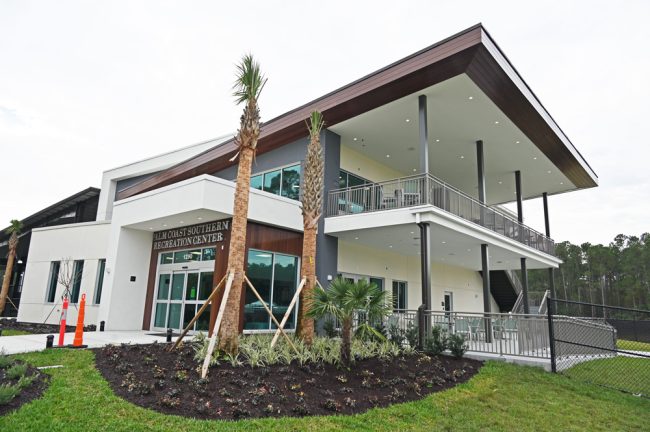
SRC & LehighTrailhead Project Overview



